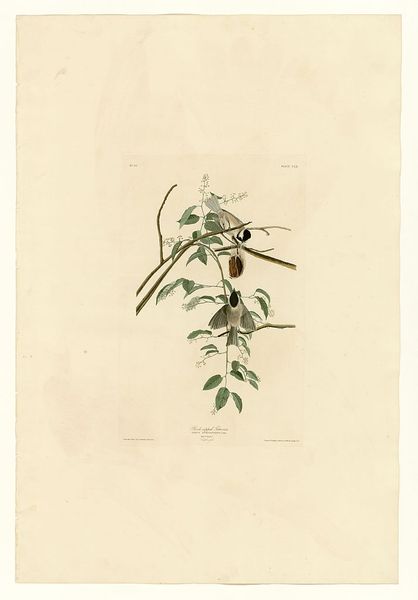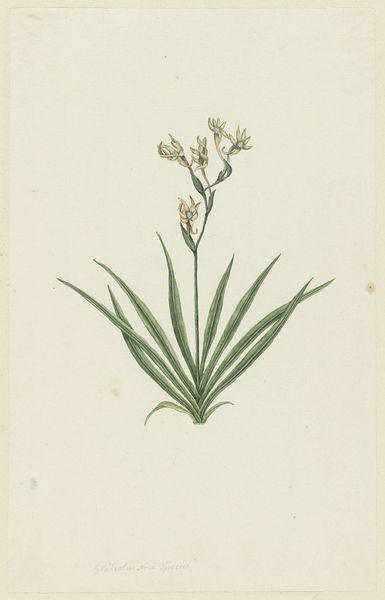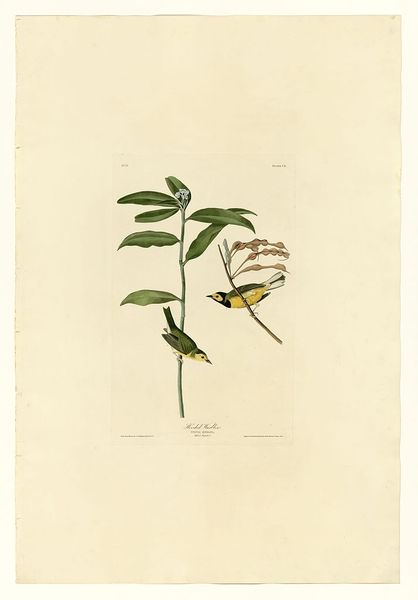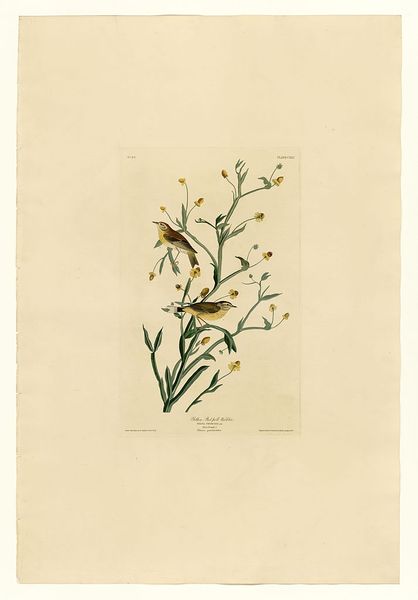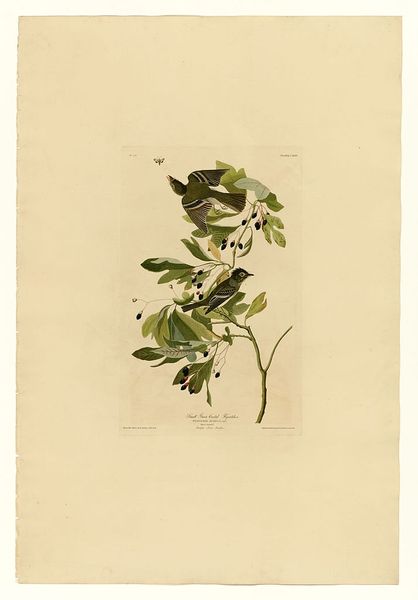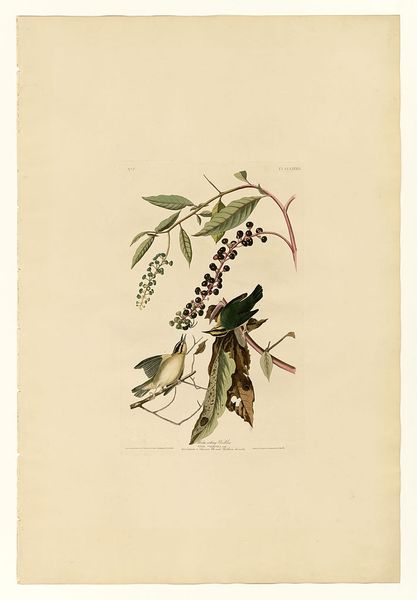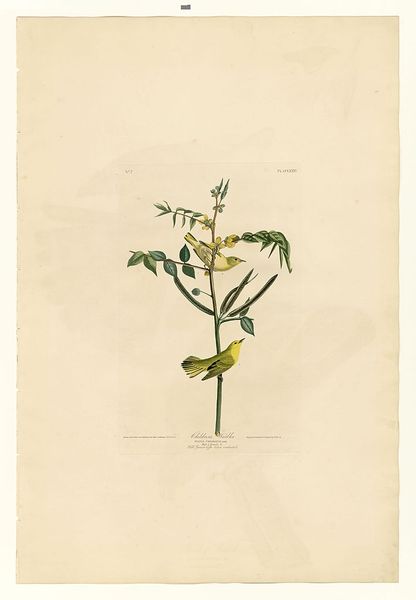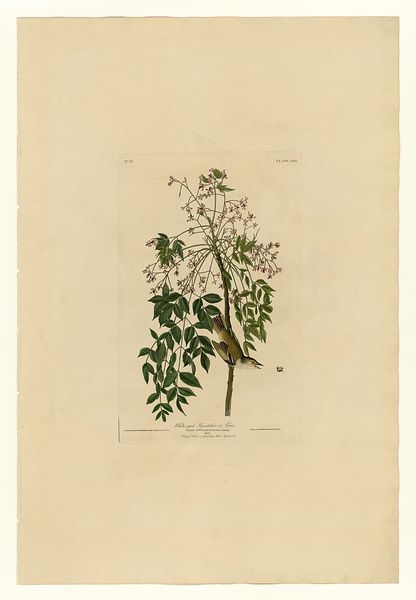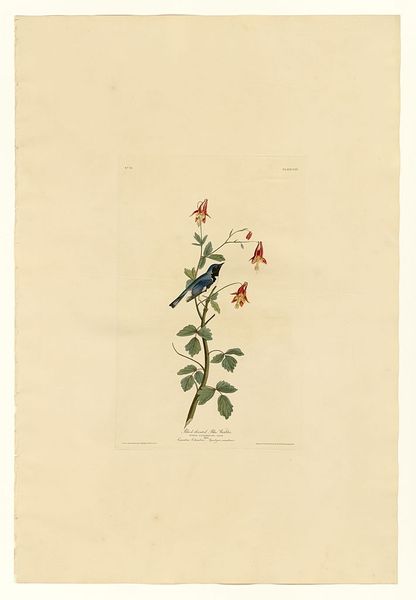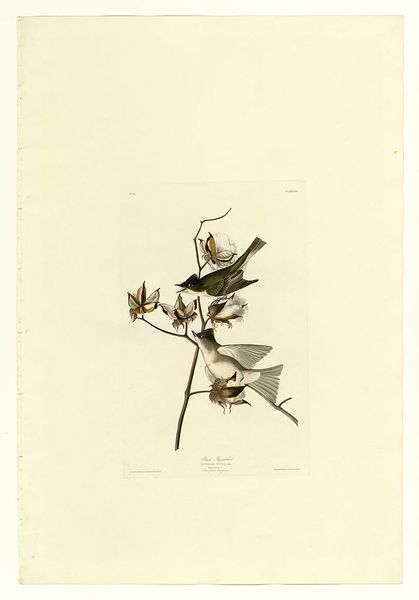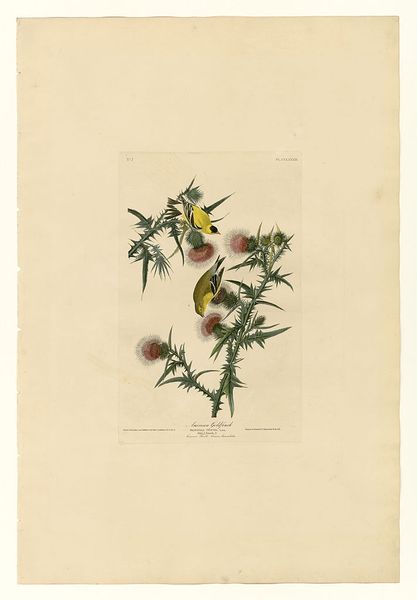
drawing, plein-air, watercolor
#
vegetal
#
portrait
#
drawing
#
plein-air
#
old engraving style
#
landscape
#
botanical illustration
#
figuration
#
watercolor
#
romanticism
#
botanical drawing
#
watercolour illustration
#
naturalism
#
botanical art
Copyright: Public domain
Editor: This is "Plate 14. Prairie Warbler" by John James Audubon, most likely a watercolor and drawing combination. The detail in the birds' feathers is extraordinary. How would you approach looking at a work like this? Curator: Initially, the meticulous rendering compels one to deconstruct the compositional strategies at play. Note the delicate application of pigment; Audubon orchestrates gradations of tone to emulate the soft plumage of the warblers, contrasting with the botanical illustration that supports the birds, and consider how the arrangement generates both depth and dynamic tension. Editor: So, you are focused on how the visual elements interact on the surface, how the materials give it its quality? Curator: Precisely. Observe the linear quality within the drawing and how it functions independently from its value in representing light. Consider also the stark contrast to the background. Note, if the birds were set in a full panorama, would they demand the same level of focus from our gaze? Editor: That makes sense, I can see how removing context changes the relationships between the elements. Without that isolation, perhaps we lose some appreciation for his technique and the simple form? Curator: Yes, form, technique, visual elements - these are all intentionally on display. Consider how your attention to form enhances our understanding of content and vice versa. Does this add value to the way you appreciate the artwork? Editor: Definitely, now I’m paying more attention to how the simple composition amplifies the birds. I’m starting to notice new details that I overlooked before. Curator: As am I, thank you for sharing this experience!
Comments
No comments
Be the first to comment and join the conversation on the ultimate creative platform.

